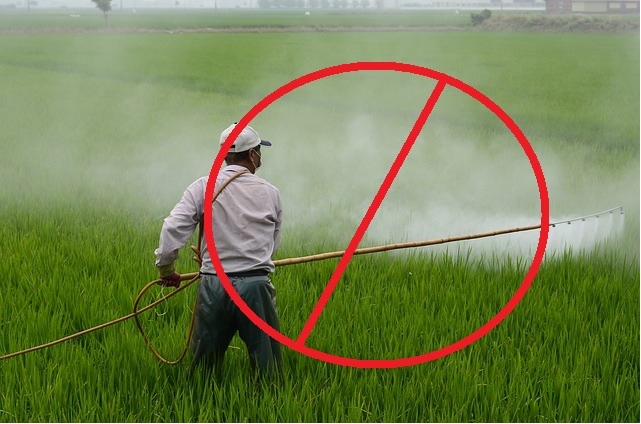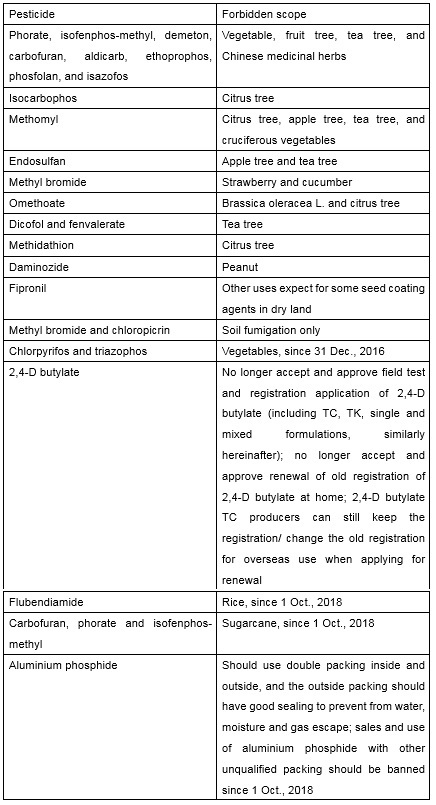The
use of pesticides in China is becoming stricter, while an increasing number of
them are getting banned in the most populous country in the world. The bans are
mostly targeting highly toxic pesticides to support a more environmental and
sustainable agriculture in China. Market intelligence firm CCM provides a list
with China’s banned pesticides, including the ones that will be banned in the near
future.

China
is trying hard to modernise its agricultural sector, enhancing sustainable
planting, educate farmers, and change the focus of crop plants. As one of the
decisive factors towards a more sustainable agriculture, the better and more
effective use of pesticides has been the centre of many subjects in China’s
politics already. While on the one hand promoting and supporting highly
efficient pesticides with a low toxicity, short duration, and environmental
friendly decomposition, on the other hand highly toxic pesticides are getting
continuously banned in China.
Since
the beginning of the new century, the Ministry of Agriculture of the People’s
Republic of China (MOA) has already enabled the ban of 39 highly toxic
pesticides. The effort in reducing the use of these harmful pesticides has
already lead to an immense drop in the share of highly toxic pesticides in
comparison to all pesticides. According to CCM, the percentage of usage has
fallen from 35% in the beginning of the century to now 2% total, with a further
decreasing trend.
Now,
the MOA has announced to ban three more pesticides, effective at the middle of
2017 and at the end of third quarter of 2018. The three pesticides are dicofol,
as well as mixed formulations of ethametsulfuron and metsulfuron-methyl.
Dicofol is the pesticide with the duration till 2018, the use and sales of the
two formulations will be already effective in July 2017.
Banned
Pesticides in China
BHC
DDT
Camphechlor
Dibromochloropropane
Chlordimeform
Ethylene
dibromide
Nitrofen
Aldrin
Dieldrin
Mercurycompounds
Arsena
Acetate
Bis-A-TDA
Fluoroacetamide
Gliftor
Tetramine
Sodiumfluoroacetate
Silatrane
Methamidophos
Parathion-methyl
Parathion
Monocrotophos
Phosphamidon
Fenamiphos
Fonofos
Phosfolan-methyl
Calcium
phosphide
Magnesium
phosphide
Zinc
phosphide
Cadusafos
Coumaphos
Sulfotep
Terbufos
Chlorsulfuron
Single
formulations of ethametsulfuron and metsulfuron-methyl
Asomate
Urbacide
Paraquat
Source:
CCM
The
long duration until the effective ban of the three pesticides is necessary
because no equal substitutions have been found yet. Chinese crops are still in
need of the usage, which makes an immediate ban impossible.
What’s
more, 12 of the 39 banned pesticides in China are only allowed to be used on
non-edible crops, according to CCM. Together with the three newly banned
pesticides, China’s list of banned pesticides will be enlarged to 42 by the end
of 2018.
China’s
government has not only banned 39 pesticides but also limited the scope of
use for 25 more pesticides, of which manufacturers and traders in China should
be aware of. CCM has listed the restricted pesticides with the forbidden scope
for orientation.
China’s
25 banned pesticides and forbidden scope, as of March 2017

Source:
China Crop Protection Industry Association
About CCM
CCM
is the leading market intelligence provider for China’s agriculture, chemicals,
food & ingredients and life science markets.
Do
you want to find out more about the biopesticides market in China? Try our
Newsletters and Industrial Reports or join our professional online platform today and get insights in Reports, Newsletter, and Market Data at one place.
For
more trade information of pesticide products, including Import and Export
analysis as well as Manufacturer to Buyer Tracking, contact our experts in trade analysis to get your answers today.
Looking
for a convenient way to get comprehensive and actual information as well as a
platform to discuss with peers about the latest agrochemicals industry and
market trends? Simply subscribe to our YouTube Channel and join our groups on LinkedIn and Facebook.